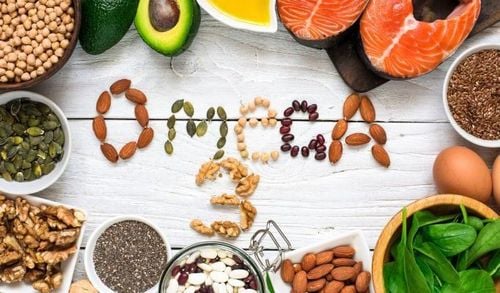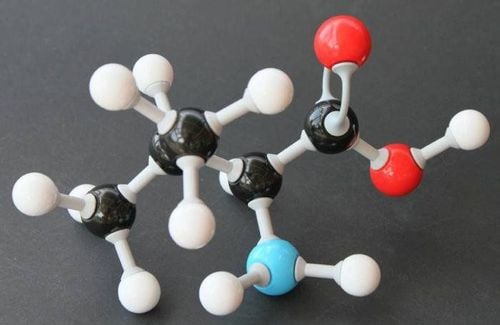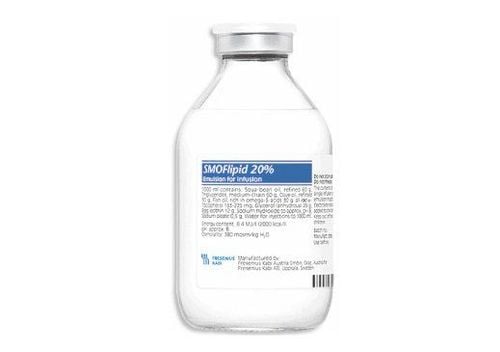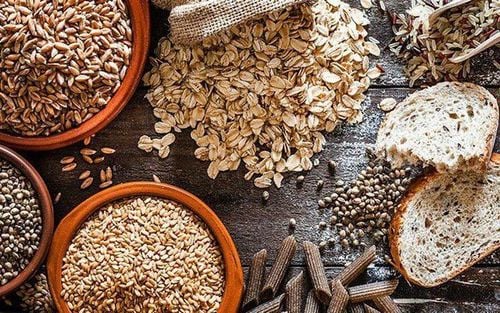This is an automatically translated article.
Omega-3, omega-6 and omega-9 fatty acids are all important fatty acids to include in the diet. They offer different health benefits. However, it is most important to ensure a balance in the ratio of omega-3, -6, and -9 fatty acids, as an imbalance can cause a number of chronic diseases. .
1. What are Omega-3 Fatty Acids?
Omega-3 fatty acids are unsaturated fats, a type of fat that cannot be made by the body and must be obtained from the diet. There are different types of omega-3 fats based on their chemical shape and size. Here are the three most common:
Eicosapentaenoic Acid (EPA): The main function of this 20-carbon fatty acid is to produce chemicals called eicosanoids, which help reduce inflammation. EPA also helps reduce symptoms of depression Docosahexaenoic acid (DHA): A 22-carbon fatty acid. DHA makes up about 8% of brain weight. DHA is essential for baby's brain development. Alpha-linolenic acid (ALA): This 18-carbon fatty acid can be converted to EPA and DHA, although the process is not very efficient. ALA is mainly used for energy in the body.
2. Function of Omega-3 Fats
Omega-3 fats are an important component of cell membranes. In addition, they perform a number of other important functions, including:
Improve heart health: Omega-3 fatty acids can increase "good" HDL cholesterol. They may also lower triglycerides, lower blood pressure and prevent the formation of arterial plaques Mental health support: Taking omega-3s may reduce symptoms of depression, schizophrenia, and schizophrenia and bipolar disorder. It may also reduce the risk of psychosis in high-risk individuals. Weight loss and waist size: Omega-3 fats play an important role in weight management and can help reduce waist circumference.

Chất béo omega-3 giúp người dùng giảm cân và kích thước vòng eo
Reduce liver fat: Getting enough omega-3 in your diet can help you reduce the amount of fat in your liver. Supports Infant Brain Development: Omega-3s are extremely important for brain development in babies. Anti-inflammatory: Omega-3 fats can reduce inflammatory responses that can cause chronic diseases in your body. Prevents dementia: Omega-3s also help improve memory in the elderly. Promotes bone health: People who eat a lot of omega-3s have better bone mineral density. Prevents Asthma: Taking omega-3s may help reduce asthma symptoms, especially in early life. Western diets often do not contain enough omega-3s. That deficiency could be responsible for chronic diseases such as obesity, diabetes, and high cardiovascular disease in these countries.
3. What are omega-6 fatty acids?
Like omega-3 fatty acids, omega-6 fatty acids are unsaturated fatty acids. Omega-6 fatty acids are also essential, so you need to get them through your diet.
Omega 6 in the body is mainly used to convert into energy. They also have anti-inflammatory properties because they can be converted into eicosanoids. Pro-inflammatory eicosanoids are important compounds in the human immune system that help reduce inflammation.
However, when these are supplied in excess, they increase inflammation and inflammation-related diseases. The recommended ratio of omega-6 and omega-3 fatty acids in the diet is 4:1 or less.
Some omega-6 fatty acids are beneficial in treating symptoms of chronic disease:
Gamma-linolenic acid (GLA) is an omega-6 fatty acid found in some oils, such as oils primrose and borage oil. In the body, most of it is converted to another fatty acid called dihomo-gamma-linolenic acid (DGLA). One study found that taking high doses of GLA significantly reduced some rheumatoid arthritis symptoms. Another interesting study found that taking GLA along with breast cancer drugs was more effective at treating breast cancer than either drug alone. Conjugated linoleic acid (CLA) is another form of omega-6 fat that has several health benefits. For example, one large study found that taking 3.2 grams of a CLA supplement per day effectively reduced body fat mass in humans.

Bên trong tinh dầu hoa anh thảo chứa lượng lớn omega 6
4. What are omega-9 fatty acids?
Oleic acid is an omega-9 fatty acid that is the most common monounsaturated fatty acid in the diet. Omega-9 fatty acids are classified as “non-essential” because our bodies can produce them.In fact, omega-9 fats are the most abundant fats in most cells.
However, consuming foods rich in omega-9 fatty acids instead of other fats also has some beneficial health effects.A large study found a high-fat diet monounsaturated (omega-9) can reduce plasma triglycerides by 19% and "bad" cholesterol by up to 22% in lipoprotein density in diabetics.
5. What foods contain these fats?
You can easily obtain omega-3, -6 and -9 fatty acids from your diet. However, it is important to have a balance of the three components mentioned above.
5.1. How Much Omega-3 Supplements A Day Is Enough There is no official standard for the recommended daily omega-3 intake. In fact, different organizations give different guidelines.
According to the Food and Nutrition Board of the Institute of Medicine, an adequate daily intake of omega-3s is 1.6 grams for men and 1.1 grams for women for adults 19 years of age and older.
5.2. Foods rich in omega-3 fats The best source of omega-3 EPA and DHA is oily fish (fatty fish). However, you can also get these omega-3s from other seafood sources, such as algal oil. ALA is mainly obtained from nuts.
Salmon: 4.0 grams EPA and DHA Mackerel: 3.0 grams EPA and DHA Sardines: 2.2 grams EPA and DHA Anchovies: 1.0 grams EPA and DHA Chia seeds: 4.9 grams ALA Walnuts : 2.5 grams ALA Flaxseed : 2.3 grams ALA
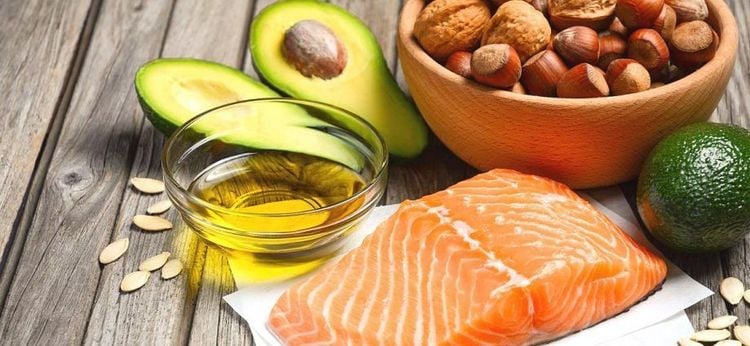
Chất béo omega-3 được tìm thấy trong một số loại thực phẩm
5.3. Foods rich in omega-6 fats According to the Food and Nutrition Board of the American Institutes of Medicine, the recommended daily intake of omega-6s is 17 grams for men and 12 grams for women, for adults aged 19 and over. - 50 years old.
Omega-6 fats are found in large amounts in refined vegetable oils and dishes prepared with vegetable oils. Nuts also contain significant amounts of omega-6 fatty acids.
Here is the amount of omega-6 in 100 grams of the following foods:
Soybean oil: 50 grams Corn oil: 49 grams Mayonnaise: 39 grams Walnuts: 37 grams Sunflower seeds: 34 grams Almonds: 12 grams Cashews: 8 grams
5.4. Foods rich in omega-9 fats Omega-9 fats are also common in vegetable oils and nuts. There is no proper intake recommendation for omega-9s, as they are not strictly necessary to supplement daily.
Here is the amount of omega-9 in 100 grams of the following food:
Olive oil: 83 grams Cashew oil: 73 grams Almond oil: 70 grams Avocado oil: 60 grams Peanut oil: 47 grams Almonds: 30 grams Cashews: 24 grams Walnuts: 9 grams
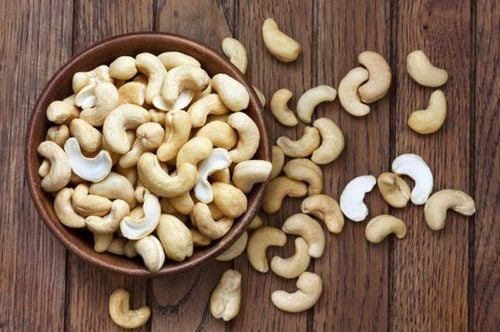
Hạt điều là một trong các loại thực phẩm giàu chất béo omega-9
6. How to supplement with omega-3-6-9?
Omega-3-6-9 combinations usually provide a balanced ratio of these three fatty acids such as omega 3: 6: 9 = 2: 1: 1. You don't need to put too much emphasis on getting them. Supplementing with two types of fats, omega-6 and omega-9, are due to the body's ability to synthesize them. There are ways to supplement with omega-3-6-9 as below:
6.1. Supplement through diet You should regularly use foods rich in omega-3 in your daily meals. To achieve the ideal balance between omega-3, -6 and -9, you should eat at least two servings of fatty fish per week and use olive oil for cooking and salad dressings. Also, try to limit your omega-6 consumption by reducing your use of vegetable oils and foods that are fried or cooked in refined vegetable oils.
6.2. Supplementing with Supplements If you're not getting enough omega-3s in your diet, it's best to take an omega-3 supplement alone rather than taking a combined omega-3-6-9 pill. Like other oils, unsaturated fatty acids are easily oxidized when exposed to heat and light. So here are some tips to keep in mind:
It is recommended that you choose an oil extracted from the cold pressing process. . Because these products have been extracted with limited heat, oxidation that leads to damage to the fatty acid molecules is minimized. To make sure you're taking a supplement that isn't oxidized, choose one that contains antioxidants like vitamin E. Also, you should choose a supplement with the highest omega-3 content – providing more than 0.3 grams per serving. EPA and DHA have more health benefits than ALA, so choose a supplement that uses fish oil or algae oil, instead of flaxseed oil. Customers can directly go to Vinmec health system nationwide to visit or contact the hotline here for support.
Articles refer to the source: healthline.com




